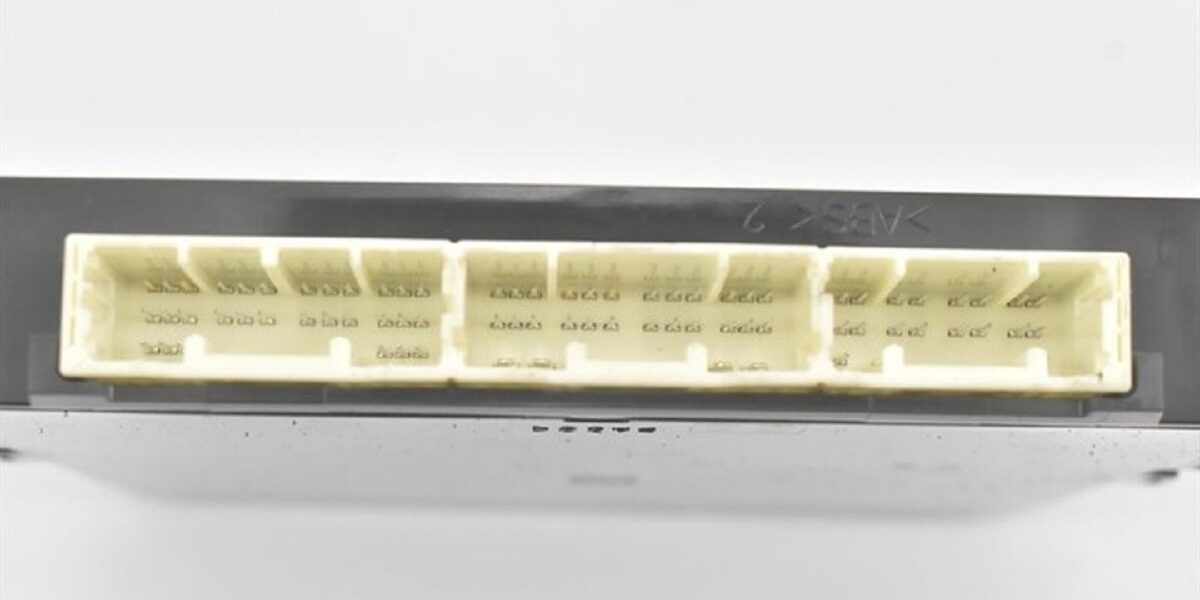The 89990-08130 EEPROM (Electrically Erasable Programmable Read-Only Memory) is a critical component found in many modern automotive systems, especially in vehicles produced by Toyota and other major manufacturers. This EEPROM serves as a compact, non-volatile memory storage unit, which is responsible for retaining essential vehicle data even when the main power supply is turned off. Recognized for its durability and reliability, this EEPROM is pivotal in preserving key data in a range of automotive control modules, which manage everything from engine performance to anti-theft systems. This article delves into the primary functions, common applications, and best practices for maintaining and troubleshooting the 89990-08130 EEPROM.
What is the 89990-08130 EEPROM?
EEPROMs like the 89990-08130 belong to a specialized category of memory chips that retain data without the need for a continuous power source. Unlike traditional RAM, EEPROMs are non-volatile, meaning they can store information even after the device is powered down. The 89990-08130 model, in particular, is designed to be durable and capable of withstanding the demanding conditions typically found in vehicles. This resilience makes it suitable for recording essential data in automotive systems. As it can endure extreme temperatures, vibrations, and other environmental factors without failing.
EEPROMs work by storing binary data in individual cells, each representing a “1” or “0.” These cells can be rewritten as needed, allowing the stored data to be updated or modified as required by the vehicle’s system. The 89990-08130 EEPROM is known for its high number of rewrite cycles and long lifespan. Making it a dependable choice for automotive applications.
Primary Functions and Data Stored
The 89990-08130 EEPROM is primarily used for data storage within automotive electronic control modules (ECMs) and electronic control units (ECUs). In modern vehicles, various systems rely on ECMs and ECUs to optimize performance and ensure safety. This EEPROM’s stored data includes information critical to the vehicle’s operation. Such as security settings, engine calibration data, error codes, and other diagnostic information.
One common use of the 89990-08130 EEPROM is within the immobilizer system, which is responsible for preventing unauthorized engine start-up. When a driver tries to start the car, the system cross-references the key data stored in the EEPROM with the vehicle’s security parameters. If there’s a match, the car will start. Otherwise, the system will prevent ignition, effectively preventing theft. This makes the EEPROM a crucial component in protecting the vehicle’s security.
Common Applications in the Automotive Industry
The 89990-08130 EEPROM is widely used in automotive applications, especially in vehicles by Toyota and other major brands. The EEPROM’s capacity to retain data without power and its rugged design make it an ideal choice for many automotive systems that require high reliability.
Apart from its role in the immobilizer, the EEPROM also stores data in other critical systems, including:
- Engine Control Module (ECM): The ECM uses the EEPROM to save information related to fuel injection, ignition timing, and other engine performance parameters.
- Anti-lock Braking System (ABS): The ABS system’s EEPROM retains error codes and calibration data that help technicians diagnose issues and ensure safe braking.
- Airbag Control Module: Information about deployment thresholds and crash data is stored in the EEPROM, allowing for accurate system responses during an accident.
- Powertrain Control Module (PCM): In hybrid and electric vehicles, the PCM uses EEPROMs to store data that optimizes performance and energy usage.
Maintaining and Troubleshooting the 89990-08130 EEPROM
Given the importance of the 89990-08130 EEPROM in automotive systems, maintaining and troubleshooting it effectively is critical. Malfunctions in the EEPROM can cause a range of issues, from faulty diagnostics to complete system shutdowns. However, with the right approach, technicians and vehicle owners can ensure the longevity of the EEPROM.
Routine Checks and Diagnostics
To maintain the EEPROM’s performance, regular diagnostics are essential. When the EEPROM encounters issues, it may trigger error codes that are stored within the ECM or ECU, alerting the technician to potential problems. Using a diagnostic scanner, a mechanic can read these error codes to determine if the EEPROM requires attention. Periodic scanning is recommended to catch issues before they lead to larger system failures.
Protecting Against Electrical Surges
One common cause of EEPROM malfunction is exposure to electrical surges or fluctuations. As a memory component, the EEPROM is sensitive to voltage changes, which can disrupt its stored data. Vehicle owners and technicians should be cautious when connecting or disconnecting electrical systems in the car. Proper grounding and surge protectors are recommended to avoid damage.
Reprogramming and Resetting
When the EEPROM’s data becomes corrupted or outdated, reprogramming is often necessary. For instance, if the vehicle’s security codes or calibration data are outdated, reprogramming the EEPROM can restore normal function. This process usually requires specialized equipment and knowledge, so it is typically performed by a certified technician.
Recognizing Signs of EEPROM Failure
Certain signs indicate an EEPROM failure, such as trouble starting the car. Unexpected error codes, or malfunctions in specific systems like the ABS or airbag modules. Should these symptoms appear, it’s advisable to consult a professional to diagnose the EEPROM and determine if reprogramming, resetting, or replacement is necessary.
Future Developments in EEPROM Technology
EEPROM technology, including models like the 89990-08130, is continually evolving to meet the growing demands of modern vehicles. Future advancements are expected to improve storage capacity, durability, and efficiency, further enhancing the EEPROM’s role in automotive systems. Innovations in automotive electronics, including advanced driver-assistance systems (ADAS) and fully autonomous vehicles, are likely to rely on improved EEPROM technology to store and process vast amounts of data.
As technology advances, some manufacturers are exploring alternatives to EEPROMs. Such as flash memory, which can offer faster data retrieval and larger storage capacities. However, EEPROMs remain the standard for many critical applications due to their reliability, especially in high-temperature and high-stress environments.
Conclusion
The 89990-08130 EEPROM plays a pivotal role in the functionality and security of modern automotive systems. With its ability to store and retain critical data across various control modules. This EEPROM ensures the vehicle operates smoothly and securely. By understanding its functions, applications, and maintenance requirements, vehicle owners and technicians can better appreciate the importance of this component. As the automotive industry continues to advance, the 89990-08130 EEPROM and similar technologies will likely remain essential to vehicle performance and safety.





